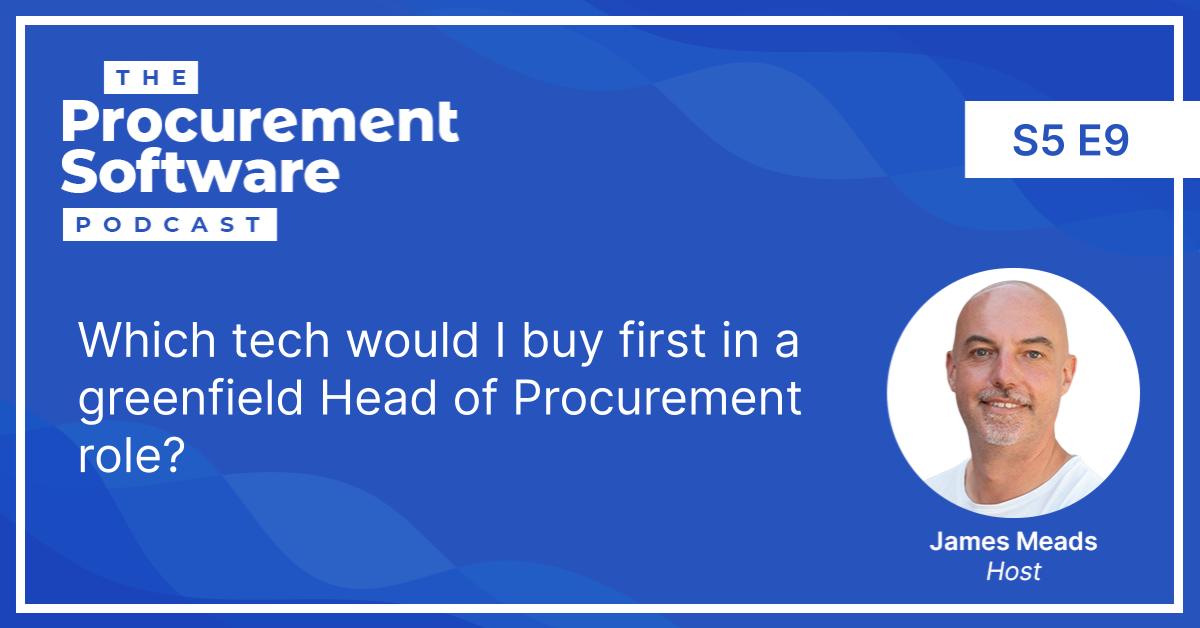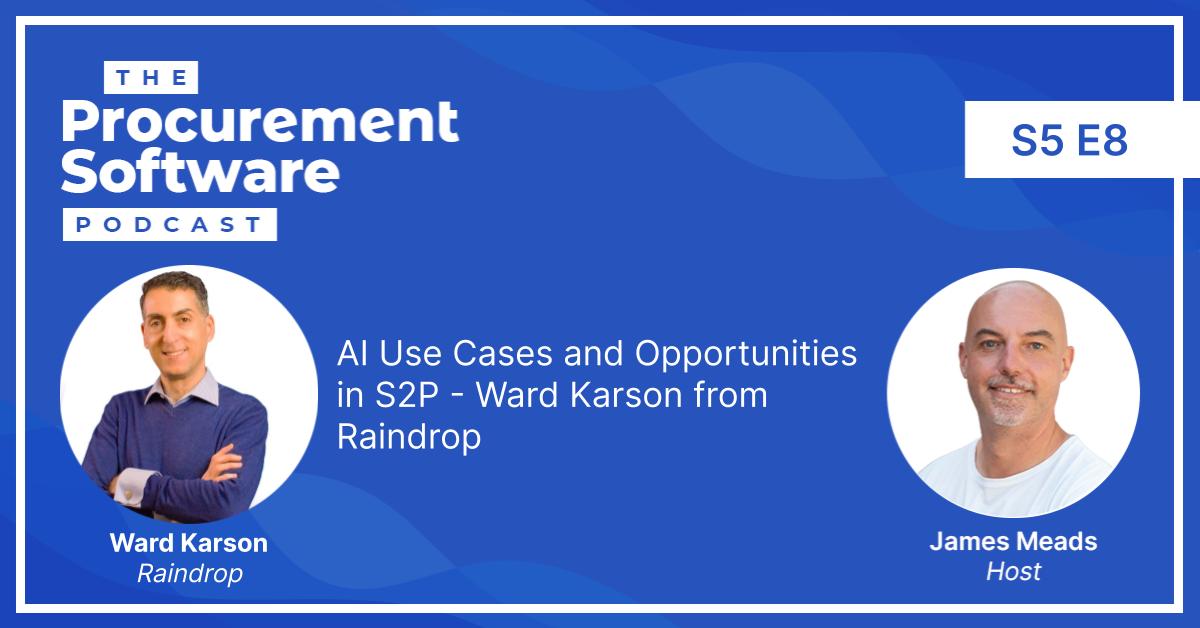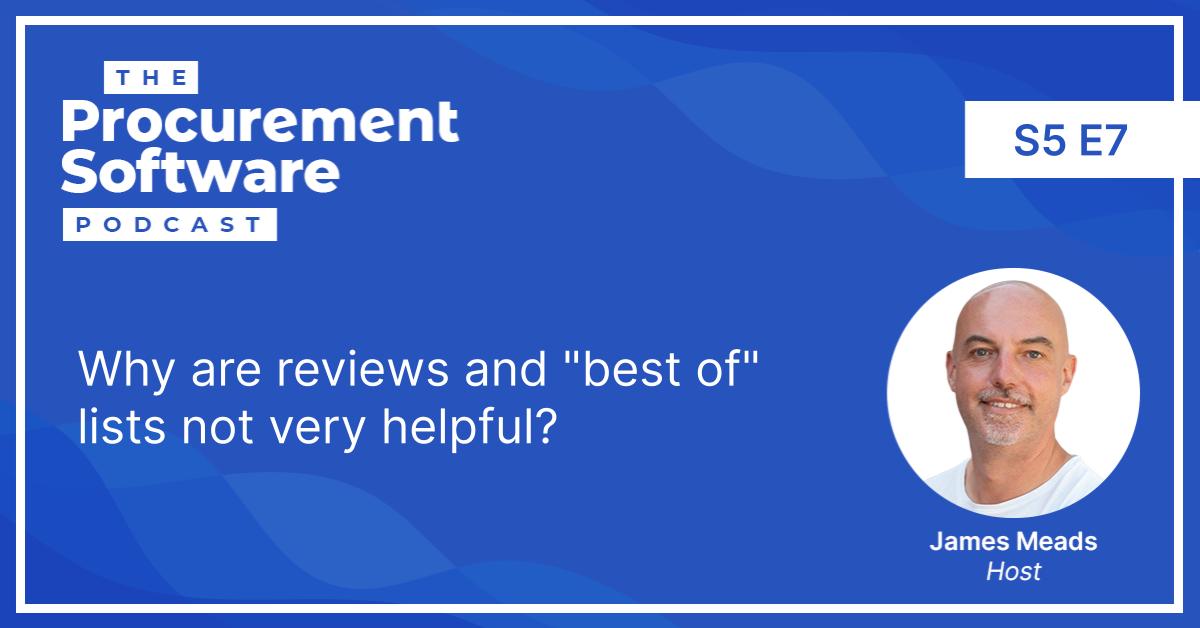This week we’re taking on a very relevant topic in today’s marketplace. Given the current supply chain crisis and geopolitical instability, what better time to speak to a guest from a unique eSourcing solution?
Alan Holland, CEO of Keelvar, is here to tell us how AI can offer something more immediate, spot and transactional, in these unstable times when agility matters.
Keelvar – bot technology for spot sourcing
Alan begins by giving us a rundown of Keelvar – who it serves and how it works.
Alan explains how his background in a university computer science department inspired Keelvar, and how his knowledge in AI has enabled him to develop a platform for sourcing excellence, that scales to any size of transaction.
Recognising the importance of data… finally!
Alan got into procurement after watching his PhD students making requests from chemical companies. It was a chaotic process, and as a computer scientist he identified it immediately as a data problem: Much richer information needed to be collected from suppliers, and data processes needed to be much more efficient.
He explains a win/win situation here – with both buyers and suppliers benefiting from richer, more detailed data. This was how things got started for Keelvar.
Optimising spot sourcing, as opposed to long-term tenders
I ask Alan about Keelvar’s unique focus: Optimising spot sourcing.
Using ocean freight as an example, Alan begins by explaining what makes Keelvar stand out from its competitors.
On the one side, there are strategic sourcing events that take a long time (often months) to complete. For these, Keelvar stands out by offering the most flexibility and detail.
The other major challenge in ocean freight is change – be that rates, network requirements or ports. Every day you’re going back to market with mini tenders to adapt to these changes. Keelvar has sourcing bots that can automate this process, and provide great flexibility in customising this automation.
We talk about the difference between ocean freight and other areas such as consumer goods, highlighting how much flexibility and agility matter in an ever-changing marketplace.
Predictability vs flexibility in ocean freight
Many freight handlers reward predictability through their pricing.
I ask Alan how Keelvar, which by nature doesn’t provide that kind of predictability, can still create value when it comes to ocean freight.
Alan explains how this capability is embedded in the sourcing bots: When requests come in, if there is predictability in the demand pattern, then that is gathered at the request stage and shared with the carriers.
How does Keelvar deal with charges at port?
Alan explains that each of Keelvar’s customers has great flexibility in how they want to design their bid sheet.
Each sourcing bot asks for different things.
If you determine that port handling fees are cost elements that should be included in the overall offer, carriers can’t submit a bid without including those fees.
What is the biggest win offered by Keelvar?
Is it cost, data quality, simplifying processes under one source of truth, or a mixture of all three?
Alan thinks it’s a mix of all three, but that time saved is the main thing – with one customer saving 93% of the time and workload required for these mini tenders in ocean freight. He sees this as Keelvar’s top benefit.
But other benefits included process consistency, and savings as a result of being able to approach a large number of carriers in parallel. Keelvar makes this kind of scalability easy, allowing you go out to many more suppliers and generate competitive tension in the process.
Keelvar is also fast – there’s no time spent waiting for someone in procurement to kick off a mini tender process.
How does reporting work with Keelvar?
All the big data is collected online, so it’s not on spreadsheet.
The bot then uses a chat interface with a human approver to offer a choice of available options: From fastest, to most economical, to most environmentally friendly.
You can then request the bot to find a solution that falls between these extremes, and approve it once you’re happy.
With ocean freight, you typically have a pool of lanes that are repeatable, from origin to destination, and on the other hand you have completely one-off spot requirements. I ask Alan how Keelvar’s sourcing bot can differentiate between the two.
Be it a one-off, a mini-tender, or a long -term agreement, you should be collecting the same information. Therefore the requirements for a sourcing bot are also fairly similar, regardless of the tender at hand. The only change being whether it’s a one-off movement or something that’s going to repeat for weeks. Then it’s up to the carriers to adjust their response accordingly. The processes involved for the bots really don’t need to change that much.
Does someone using Keelvar need a good grasp of logistics procurement?
Yes. Any bot is only as smart as the person telling it what to do. Usually the person approving suggested actions from the bot will need a competent overview of the procurement process they’re dealing with.
Simple factors like ‘shortest route’ can be calculated mathematically, but nuanced factors like CO2 emissions will require personnel to make the final call.
There’s only so much machines can do in place of human judgement.
However, there is an emerging process where the bot becomes more tightly integrated with your data sources.
Bots can use third party data sources to ascertain more information than you might think – which vessel will be used? What’s it’s age? These factors can give you an idea on emissions, and so it is possible, by being extremely qualitative, to train the bots to apply bias here.
The future of Keelvar
A feature we could see in the near future are FCL and LCL bots who learn to talk to each other, and that are able to handle conditional, “if x then y” scenarios. Alan sees this as a natural next step.
Beyond ocean freight – Keelvar and other categories
For a final question I ask Alan about other categories outside of ocean freight where Keelvar has been a success.
Large retailers, automotive, consumer goods – all use Keelvar for categories such as packaging, temporary labour, steel parts, fuel, and electricity. There are many spend categories with complex cost structures, that require either/or decisions, and these are where Keelvar delivers most benefit.
Keelvar can be applied to direct and indirect categories, which is quite unique. Most high end sourcing solutions tend to focus on one or the other.
Stay in touch!
- Connect with Alan on LinkedIn
- Visit Keelvar’s website
- Visit ProcurementSoftware.site
- Sign up for the Procurement Software Newsletter
- Book an Intro Call and let’s talk all things Digital Procurement!
- Connect with James on LinkedIn
- Follow Procurement Software’s LinkedIn Page


